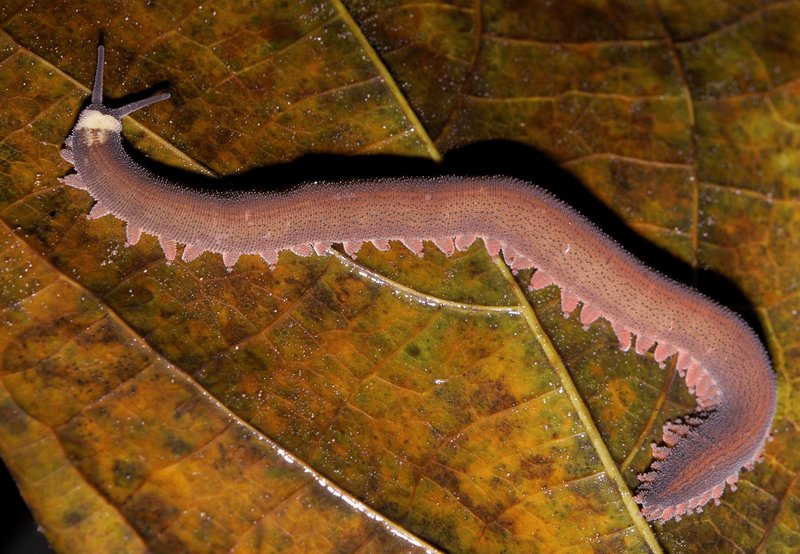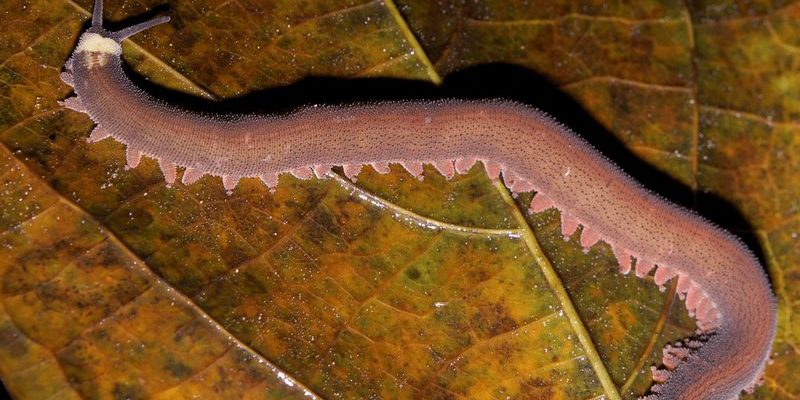
Velvet worms, or *Onychophora*, bring a unique twist to the competition scene. Armed with their sticky slime and keen hunting skills, they play an essential role in their habitats. So, do they compete? And if so, how? Let me explain what makes these critters tick, what they’re up against, and how they navigate the complexities of their underworld.
What Are Velvet Worms?
Velvet worms look like something straight out of a sci-fi movie—imagine a slug with legs and a fuzzy exterior. These guys are segmented invertebrates that can grow to about 15 centimeters long. They reside primarily in damp, tropical, and subtropical regions, where they thrive in leaf litter and decaying wood. Their soft bodies are covered in a velvety skin, hence the name.
Habitat is crucial for velvet worms. They love moisture, so you’ll find them in humid environments. These creatures are nocturnal, which means they’re most active at night, sneaking out to hunt and explore. Think of them as nature’s little ninjas, ready to pounce on unsuspecting prey.
Now, you might be wondering, “What do they eat?” Velvet worms primarily feast on insects, like spiders and small bugs. They use a sticky, slime-like secretion to trap their prey. This method is quite effective—a bit like fishing with a net, but way cooler!
The Role of Competition in Ecosystems
In nature, competition is a driving force. It keeps populations in check and ensures that resources like food and habitat space are used efficiently. For velvet worms, competition can come from various sources, including other invertebrates and even larger predators.
You could think of the forest floor as a city where everyone’s jostling for the best spots. Other invertebrates, such as centipedes and various types of beetles, also share this space. They’re all vying for the same resources, which can lead to some intense competition.
When resources are limited, velvet worms need to be strategic. They’ve developed unique hunting tactics that help them stand out. Their ability to produce sticky slime can give them an edge over competitors. If another invertebrate is also trying to catch a meal, the velvet worm’s slime might just make the difference in snatching that dinner!
Who Are Velvet Worms Competing Against?
While velvet worms are unique in their hunting methods, they share their habitat with many other invertebrates. Some of the main competitors include:
- Carnivorous insects: Insects like beetles and centipedes are fierce predators that often share the same hunting grounds as velvet worms.
- Other invertebrates: Creatures like spiders and millipedes can also compete for food resources and shelter.
- Larger predators: Birds and small mammals might not be direct competitors for food, but they certainly compete for the same living spaces.
Each of these competitors comes with its own set of advantages. For instance, larger predators might chase velvet worms away from a prime hunting area. This pushes these little guys to adapt and find new strategies for survival.
How Velvet Worms Adapt to Competition
Adaptation is key for velvet worms competing in such a bustling ecosystem. These adaptations come in many forms, from their hunting techniques to the habitats they prefer.
For example, their *sticky slime* is not just for catching prey; it also acts as a defense mechanism. When threatened, a velvet worm can ooze slime that can confuse or deter predators, allowing them to escape. Picture a magician pulling a rabbit out of a hat—only this time, it’s a slippery escape artist!
Additionally, their nocturnal nature allows them to avoid daytime predators. By being active at night, they can hunt without the same level of risk. Just like how some people prefer late-night snacks, velvet worms have optimized their feeding times to dodge competition.
The Importance of Habitat
The habitat plays a huge role in competition and survival for velvet worms. They prefer moist environments rich in organic material, which is where their food sources abound. The right habitat offers safety, food, and the perfect amount of humidity.
Forest litter is particularly crucial, as it provides both cover and nourishment. Velvet worms use this environment to hide from larger predators and to stalk their own prey. However, as the environment changes due to deforestation and climate change, their habitat becomes threatened, increasing competition for the remaining resources.
If their habitat degrades, velvet worms might have to compete harder with other invertebrates for limited prey. It’s a bit like a restaurant running out of popular dishes—everyone’s fighting for the last plate!
Looking Ahead: The Future of Velvet Worm Competition
As habitats continue to face threats from human activities, the competition for resources like food and space is likely to increase. Understanding velvet worms and their competition can help scientists and conservationists highlight the importance of protecting their ecosystems.
Conservation efforts can enhance habitats, allowing these unique creatures to thrive alongside their competitors. By preserving biodiversity, we ensure not only the survival of velvet worms but also the entire web of life they’re a part of.
So, the next time you think about velvet worms, remember: they’re not just cute little creatures; they’re warriors in the battle for survival, navigating a landscape filled with challenges and competitors. Their story is one of resilience and adaptation, reminding us that even the tiniest beings play an important role in our world’s ecosystem.
In conclusion, velvet worms do compete with other invertebrates, but they also showcase the beauty of nature’s complexity. By paying attention to these incredible creatures and their struggles, we can better appreciate the delicate balance that keeps our ecosystems thriving.

